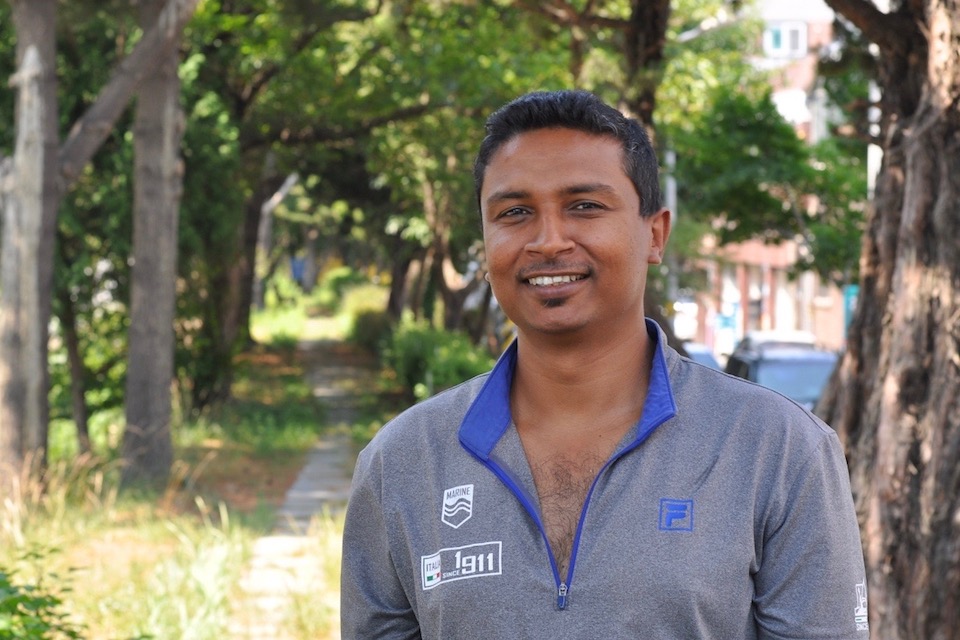
KÉ Interview: Meet a Man Who Farms Your Abalone

Satellite photos of Nohwado are striking. Rows upon rows of neatly arranged black rectangles fill the waters surrounding the island, as if the farmland continued out in sea. In a sense, that’s true. The black lines are all farms for fish and other aquatic life, and it’s here that half of South Korea’s abalone, a type of sea snail and a local delicacy, is harvested. (If you believe the island’s official website, that number goes up to 80 percent of the domestic market share.)
Abalone is pricey, and like many expensive and less common types of seafood in the country, it is purported to have many health benefits and has an array of uses in traditional medicine. However it’s best known use is in jeonbokjuk, a rice-based porridge found in restaurants around the country.
At 20,000-30,000 won per kilogram, abalone considerably more expensive than other sources of protein. That hasn’t stopped the demand for abalone from skyrocketing in the past decade, with production last year over 14 times greater than production from 2003. This has fueled a miniature economic boom on Nohwado.
Demand is high, and Nohwado’s population of just under 6,000 isn’t enough to provide all the labor necessary to keep up. That’s where migrant workers come in. Despite a high youth unemployment rate, job openings in the fisheries industry are hard to fill. The work is shunned as “3D” — dirty, difficult and dangerous. University-educated South Koreans look for white-collar work — some 70 percent of South Korean high school graduates go on to attend university — so low-skill blue-collar work, including agriculture, construction and manufacturing, is increasingly done by South and Southeast Asian migrants.
Migrant laborers in South Korea number close to 300,000 — compare to just 16,000 on language teaching visas — but still the word ‘foreigner’ in Korean most often conjures up the image of English-speaking westerners. These laborers, most of whom are on an E-9 visa, for “non-professional employment,” make up a social class that is looked down on by many.
Meet Rasika Chamal, a 37-year-old Sinhalese man from Sri Lanka who spent a year working on Nohwado’s abalone farms. Korea Exposé spoke with him at an NGO in the country’s southwest to help put a face on South Korea’s otherwise often unseen minority.
Why did you decide to look for work in South Korea?
I heard about working in South Korea from friends in Sri Lanka who had worked here. They said it’s a good chance to earn money and recommended that I go. In Sri Lanka I worked as a police officer and when I return I’ll go back to that job again, but the pay here is much higher. In Sri Lanka I would earn 700,000-900,000 won* per month. Here I can earn double that amount. My plan was to work for as long as I could, for four years and 11 months, then return to my family. But the decision wasn’t easy. I knew I would not be able to visit my wife and my two children the whole time I was in South Korea. My wife told me, if I want to go, then go.
[The government deliberately limits E-9 visa holders to a maximum stay of four years and 10 months because they can qualify for permanent residency after five years of legal residence.]
What was your preparation like before coming to South Korea?
The whole process took one year. I had to study Korean and do job training to work in the fisheries industry. You have to take TOPIK [Test of Proficiency in Korean] and pass with at least level one. I studied Korean in private classes given by a Sri Lankan monk so I could pass the test. Learning to read Korean was easy but listening was difficult, and I was in those classes for 6 months. Your TOPIK score decides the industry you work in, so when you’re studying for the test it isn’t just trying to get level 1. Manufacturing is near the top, and fisheries work is at the bottom.
When I applied, only fisheries jobs were available so that’s where I was assigned to work. I had no experience working in the fisheries industry, so I took training classes run by the Sri Lankan government in partnership with the South Korean government.
I took out a 4.5 million won loan from my bank of when I decided to work in South Korea, and half of that I spent while I was preparing. This is my first time being overseas, so I also had to obtain and prepare a lot of documents for my passport and visa, which was expensive. I paid 800,000 won to get those documents. My Korean lessons cost 150,000 won, the job training was 200,000 won, and my plane ticket was 1.2 million won. Plane tickets are normally much cheaper [ed: about 500,000 won], but government designates a particular travel agent that you have to go through, and I think they were charging a high commission. The rest of the money I kept as pocket money to live off of until I received my first paycheck.
What was it like working in Nohwado?
Working on a fishing boat is hard. It was me, the boat’s owner and his wife, out on the boat every day for 10 or more hours. The abalone live in the fish farms and attach to these big cages that sit in the water. The small crane on the boat lifted the cage, and then we’d harvest the mature abalone or move the small ones to bigger cages, then put the cage back in the water and feed them seaweed and kelp. We started at seven in the morning, went back to shore to the boss’ mother’s house for lunch, then worked again until five in the evening. We did that every day, with days off only when it rained.
What did you do in your free time?
Well, we didn’t have much free time. My contract was for 260 hours a month [~60 hours a week], and we worked every day of the week. In the evenings I was too tired to do anything much, and I called my family every day.
Weather is unpredictable so I never knew when my next day off would be, but when we got a chance to rest I sometimes travelled. We could take a 40-minute ferry ride to Wando [a bigger island] and take a two-hour bus from there to Gwangju. There were about 50 other Sri Lankans working on Nohwado, and we played soccer and cricket together when we had time.

Did your boss provide you with a place to live?
Yes, he did. It was a shipping container that had been converted into a house. It had a window, a bathroom, a fridge, and a gas stovetop. There was a water heater and floor heating(?), but it was still very cold in the winter and very hot in the summer. The other foreign workers on Nohwado lived in the same kind of house. Sri Lanka is a hot country so the cold was a big shock for me.
Was any part of the experience unpleasant?
The work was hard and we worked every day. My boss often shouted and swore at me. I worked hard and did what I was told, so I don’t know why he was upset. Now I know a lot of Korean swear words, at least. And while working my hands were always wet so there were always cold. My boss gave me gloves but they didn’t help.
TV footage showing abalone farming around Nohwado, an island to the southwest of South Korea
Do you feel the work was safe?
It was dangerous work so we always had to think about safety. The crane pulls up the cages using a cable, and if you’re not careful the line can get wrapped around your neck. And we wear waders while working. They’re heavy and difficult to take off quickly. It doesn’t matter if you can swim or not; if you fall in while wearing those you’re not coming back up.
Did you wear life jackets?
There weren’t any life jackets on the boat, but we wouldn’t have worn them anyways. In the winter especially you already have too many layers on to wear a life jacket on top of all your clothes. You always have to be mindful of the danger of falling into the water. I’ve heard stories about other migrant workers who died that way when their boat tipped over.
You’ve changed jobs, I understand. Why?
My visa is for three years, but my boss let me go after just one year. He told me that he didn’t have enough work. But the contract involves the labor ministry, so to break the contract he had to fire me for cause. I don’t know what reason he gave the government.
I want to keep working in South Korea, so I appealed the firing. I’m waiting for the labor ministry to make a decision on my case. Luckily, I can still work legally while I’m waiting for their decision.
Where do you work now?
For the past six months I’ve been working for a construction subcontractor. I met him through a temp agency looking for day laborers. I do tiling in apartment complex construction sites. It’s a 10-hour day and I earn 100,000 won. I usually work about 17 or 18 days a month. It’s still day labor and my boss pays me a lump sum just once a month. If he disappeared or stopped paying me I couldn’t do anything about it, but we have a good relationship and there haven’t been any problems so far.
After your experiences so far, what are you thoughts about working in South Korea?
I still think South Korea is a good place to work, and I’m happy I came. Despite my experiences I would recommend it to my friends in Sri Lanka. I want to work for the whole four years and 10 months that’s allowed, then return to my family in Sri Lanka. I hope I’m not sent back early.
Editor’s Note: Prices paid in Sri Lankan rupees are quoted here as their equivalents in South Korean won
*
Cover Image: Rasika Chamal, 37, is a Sri Lankan worker who spent a year working on a South Korean abalone farm. (Daniel Corks/Korea Exposé)

